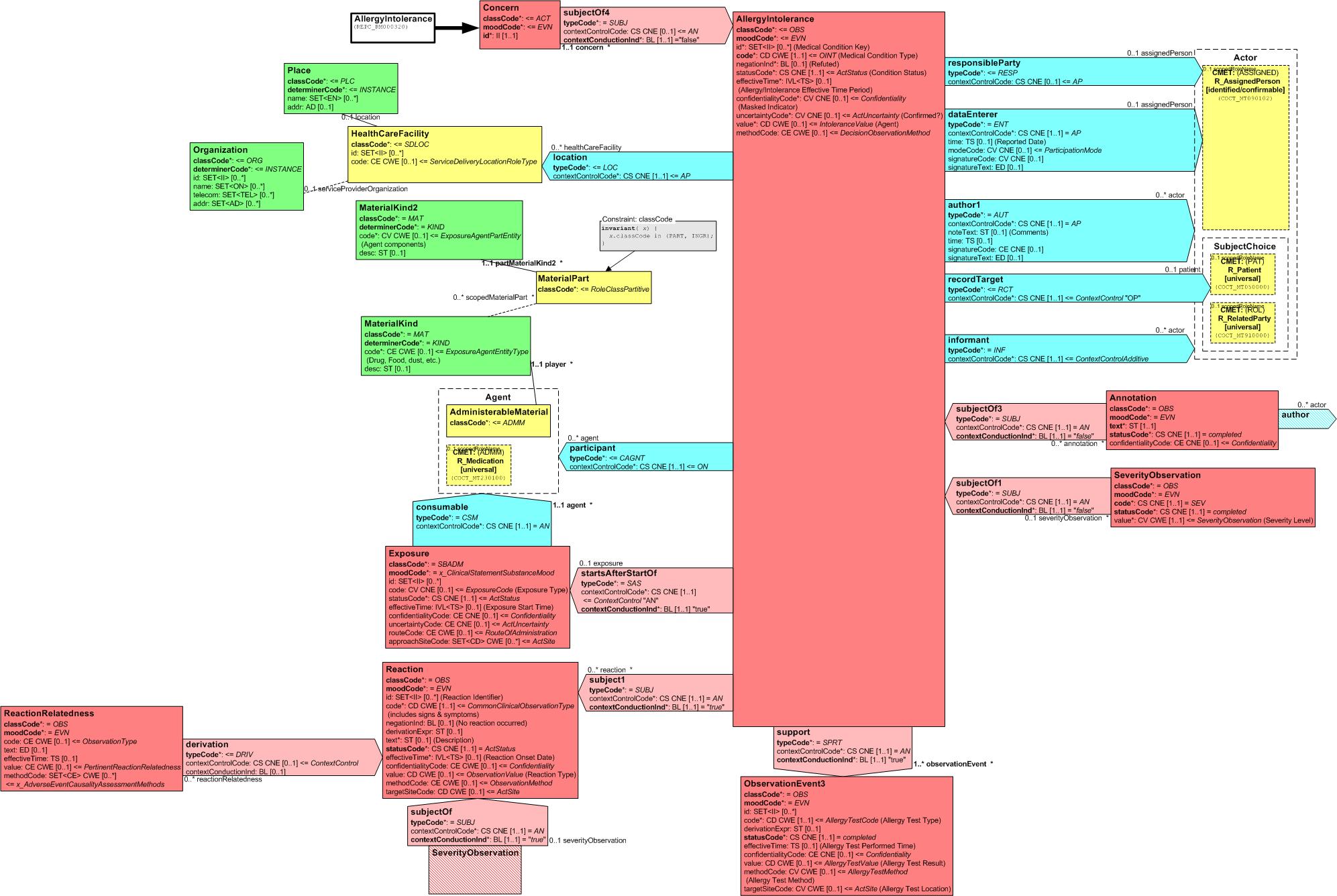This wiki has undergone a migration to Confluence found Here
Difference between revisions of "Allergy Intolerance Models"
Jump to navigation
Jump to search
(→Notes) |
(→Notes) |
||
| Line 4: | Line 4: | ||
==Notes== | ==Notes== | ||
| − | *The entrance point to the structure is a regular [[Concern Tracking structure]]. | + | *The entrance point to the structure is a regular [[Concern_Tracking|Concern Tracking structure]]. |
*The subject of the concern is an allergy observation. The observation is only a time point observation. Any assertion that the allergy is still active in the patient at time points after the observation is implied by the fact that the concern is ongoing, not the observation. | *The subject of the concern is an allergy observation. The observation is only a time point observation. Any assertion that the allergy is still active in the patient at time points after the observation is implied by the fact that the concern is ongoing, not the observation. | ||
*Like other observations, an allergy observation has a recordTarget (patient), an activityTime (when the judgment of an allergy relation was noted), effectiveTime (the time the allergy was believed to have started in the patient), author, informant, location, etc. | *Like other observations, an allergy observation has a recordTarget (patient), an activityTime (when the judgment of an allergy relation was noted), effectiveTime (the time the allergy was believed to have started in the patient), author, informant, location, etc. | ||
Revision as of 01:39, 1 February 2007
Allergy/Exposure RMIM versions
return to Allergy/Intolerance Page
Notes
- The entrance point to the structure is a regular Concern Tracking structure.
- The subject of the concern is an allergy observation. The observation is only a time point observation. Any assertion that the allergy is still active in the patient at time points after the observation is implied by the fact that the concern is ongoing, not the observation.
- Like other observations, an allergy observation has a recordTarget (patient), an activityTime (when the judgment of an allergy relation was noted), effectiveTime (the time the allergy was believed to have started in the patient), author, informant, location, etc.
- The code of the allergy observation is to represent the type of observation. For example "True Allergy" vs "Intolerance". This is not to code the allergen.
- The allergy observation is a statement of judgment or belief by someone (the author) that an exposure of the patient to some substance is related to an adverse reaction in the patient. Patients or family members may be informants, the observation doesn't need to be witnessed by the author. For example, if a patient presents to a clinician and says "I'm allergic to Sulfa. I get a rash when I take that." if the clinician accepts that statement and reasserts it by placing it in the chart as "allergy: Sulfa->Rash" the observation is still of the clinician -- it is his judgement to believe/accept the statement of the patient. The patient is the informant.
- The allergy observation (again, a judgment) has a uncertaintyCode to represent the strength of the belief (eg, Questionable|Probable|Confirmed,etc). The observation may also be negated to indicate that the patient does not have an allergy to a particular substance.
- The allergy observation may be made using various techniques from simple history to formal allergen challenge. This distinction may be recorded in the methodCode.
- The allergen (the Causative Agent participant to the judgment) is not necessarily the same as the substance that was exposed. For example, the substance exposure may have been to percocet, but the judgment of the allergic material might be oxycodone and excluding the Tylenol since the patient was exposed Tylenol several times without adverse effect.
- The reaction is a simple observation. It may have a severity.
Questions
- The allergy observation may also have a serverity. This may be different than the reaction severity. Is this concern severity, or observation severity?
- The observation (judgement) may be supported by test results such as a formal skin testing. This might be represented as an coded allergy test, which implies allergens, but doesn't specify reactions and other observations in this model per say. It may a simple code/value such as "PeanutAllergy:Yes"
Is this really needed, or should the support just be another allergy observation (a recursive link) with a different method code?
- ReactionRelatedness??
